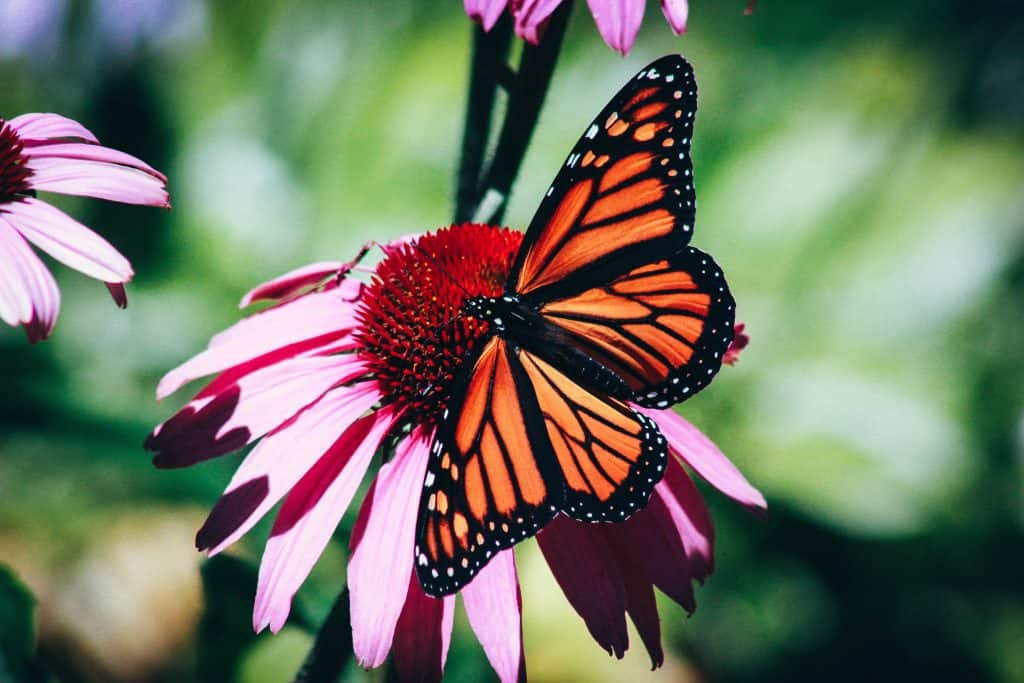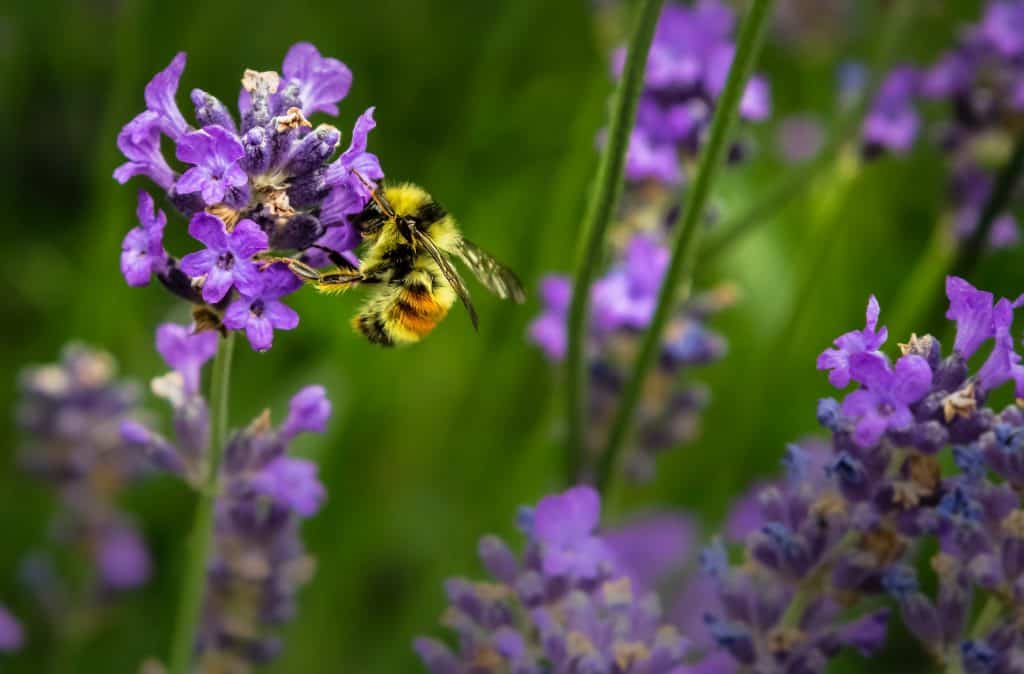10 Books on Garden Pollinators
The majority of flowering plants require an outside agent, usually an animal – insect, bird, or even small mammals – to pollinate them in order to reproduce. In fact, the prevailing theory is that flowers evolved to attract pollinators.
Approximately three-quarters of major food crops require pollination for reproduction. Insects – bees, moths, butterflies, and some beetles – make up the majority of insect pollinators, so farmers and gardeners try to make sure that a healthy population of them is available to perform this vital task. For many decades, farmers have come to depend upon the domestic western honey bee (Apis mellifera) as the primary pollinator. Every spring, professional apiarists make the rounds, heading to commercial farms and moving colonies of their bees to pollinate the crops.
However, in recent years, a phenomenon known as “bee colony collapse disorder” – when all of the members of a colony except for the queen, immature bees and some nurse bees, disappear or die off – became a significant concern in North America and parts of Europe. While there are a number of theories about the cause or causes of this anomaly, such as a fungal infection or stress caused by the constant relocation of bee hives for commercial pollination, a definitive program to halt the disorder has not been established.
Fortunately for agriculturalists and gardeners (not to mention the world’s food supply), western domestic honey bees are not the only pollinators available. In fact, there are literally thousands of species of insects that perform that crucial task. This book list offers ten titles which describe these insects and offer information on how to attract them to gardens and fields, as well as farming and gardening practices to keep their populations healthy and thriving.
1. Pollinator Friendly Gardening: Gardening for Bees, Butterflies and Other Pollinators by Rhonda Fleming Hayes
Pollinator Friendly Gardening covers everything from plant selection, habitat-building, and growing practices to attract and maintain a population of wide range of beneficial insects.
2. Attracting Native Pollinators: The Xerces Society Guide, Protecting North America’s Bees and Butterflies by The Xerces Society
The Xerces Society, named after a now-extinct species of butterfly, is dedicated to the conservation of invertebrate species. Attracting Native Pollinators describes how to create insect-friendly structures and maintain proper habitat to help pollinators thrive.
3. Pollinators of Native Plants: Attract, Observe and Identify Pollinators and Beneficial Insects with Native Plants by Heather N. Holm
Pollinators of Native Plants provides a comprehensive look at the relationship between the native plants and native insects of the Midwest, Great Lakes region, the Northeast and southern Canada. Along with highly descriptive text there are numerous photographs that help illustrate various points and help readers identify pollinators. The book is organized by plant communities, providing guidance on the best practices and habitat designs to help conserve pollinator populations for both hobby and professional growers.
4. The Bee-Friendly Garden: Design an Abundant Flower-Filled Yard That Nurtures Bees and Supports Biodiversity by Kate Frey, Gretchen Lebuhn and Leslie Lindell
Written by both biologists and award-winning garden designers, The Bee-Friendly Garden describes how to plan flower gardens that will attract pollinators. Aside from the inherent good in promoting healthy pollinator populations, the guide also describes how their presence is beneficial to vegetable gardens and other flowering plants in the vicinity.
5. Bees in Your Backyard: A Guide to North American Bees by Joseph S. Wilson and Oliva J. Messinger Carril
More than just an identification guide to the more than 4,000 species of bees in North America, Bees in Your Backyard also includes pointers on how to attract bees by providing appropriate plants.
6. The Bee: A Natural History by Noah Wilson Rich
The Bee: A Natural History provides an overview of the more than 20,000 species of bees worldwide, covering everything from bee evolution to ecology to human-bee relations.
7. Bumble Bees of North America: An Identification Guide by Paul H. Williams, Robbin W. Thorp, Leif L. Richardson and Sheila R. Colla
Bumble Bees of North America is a guide to the 46 species of bumble bees north of Mexico. The book includes descriptions of their ecology and habits as well as identification keys and population distribution maps.
8. A Sting in the Tale: My Adventures with Bumblebees by Dave Goulson
A Sting in the Tale is a delightful first-person account of exploring the natural history and behavior of bumblebees by the founder of The Bumblebee Conservation Trust.
9. Butterfly Gardens: Luring Nature’s Loveliest Pollinators to Your Yard by Brooklyn Botanic Garden
Filled with detailed and practical information on species of North American butterflies, Butterfly Gardens also outlines which plants can attract these helpful and beautiful pollinators.
10. Gardening for Butterflies: How You Can Attract and Protect Beautiful, Beneficial Insects by the Xerces Society
Gardening for Butterflies was written by experts at the Xerces Society, providing information on the importance of butterflies to plant ecology. The book also describes the threats to butterfly species, offers suggestions on plant selection, and covers gardening practices that will encourage diverse and strong butterfly populations. The photographs not only aid in identification but also provide beautiful motivation for encouraging butterflies to make yards and gardens their homes.
Bonus Tip:
Gardeners and agriculturalists who are interested in attracting and maintaining populations of wild native pollinators may also want to contact their local agricultural extension agent for additional information. Each county in the United States has a resident agent, who can be found through the “Government Agencies” pages of the telephone book or online through the Internet.











